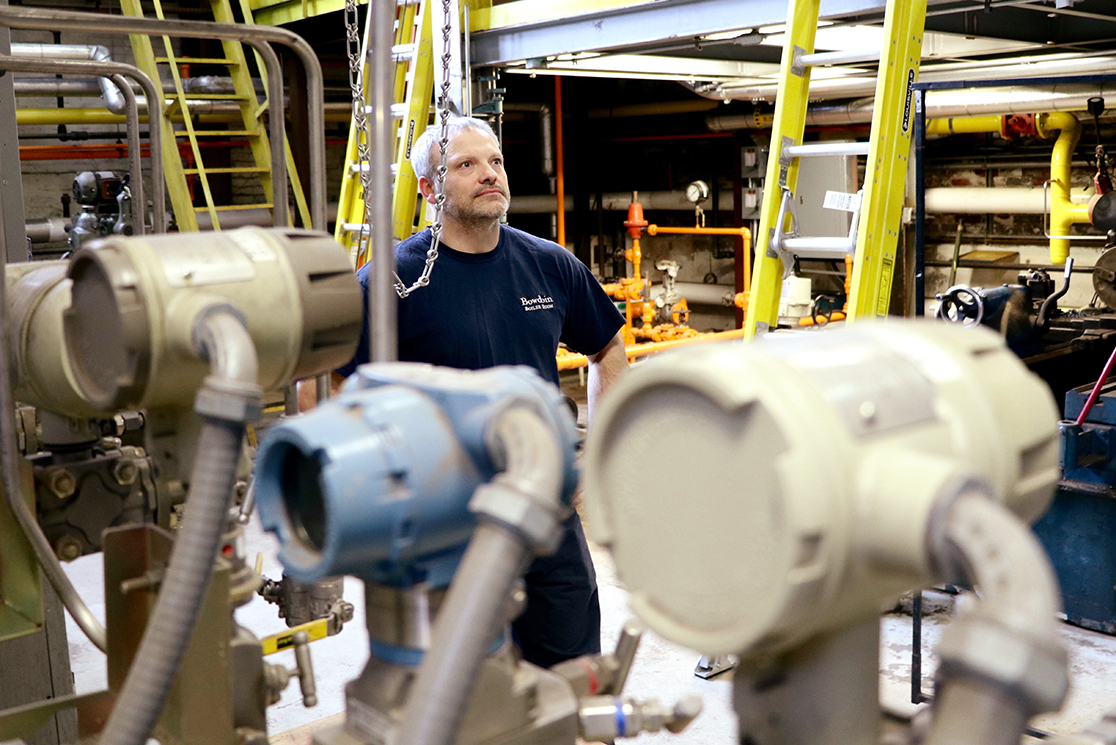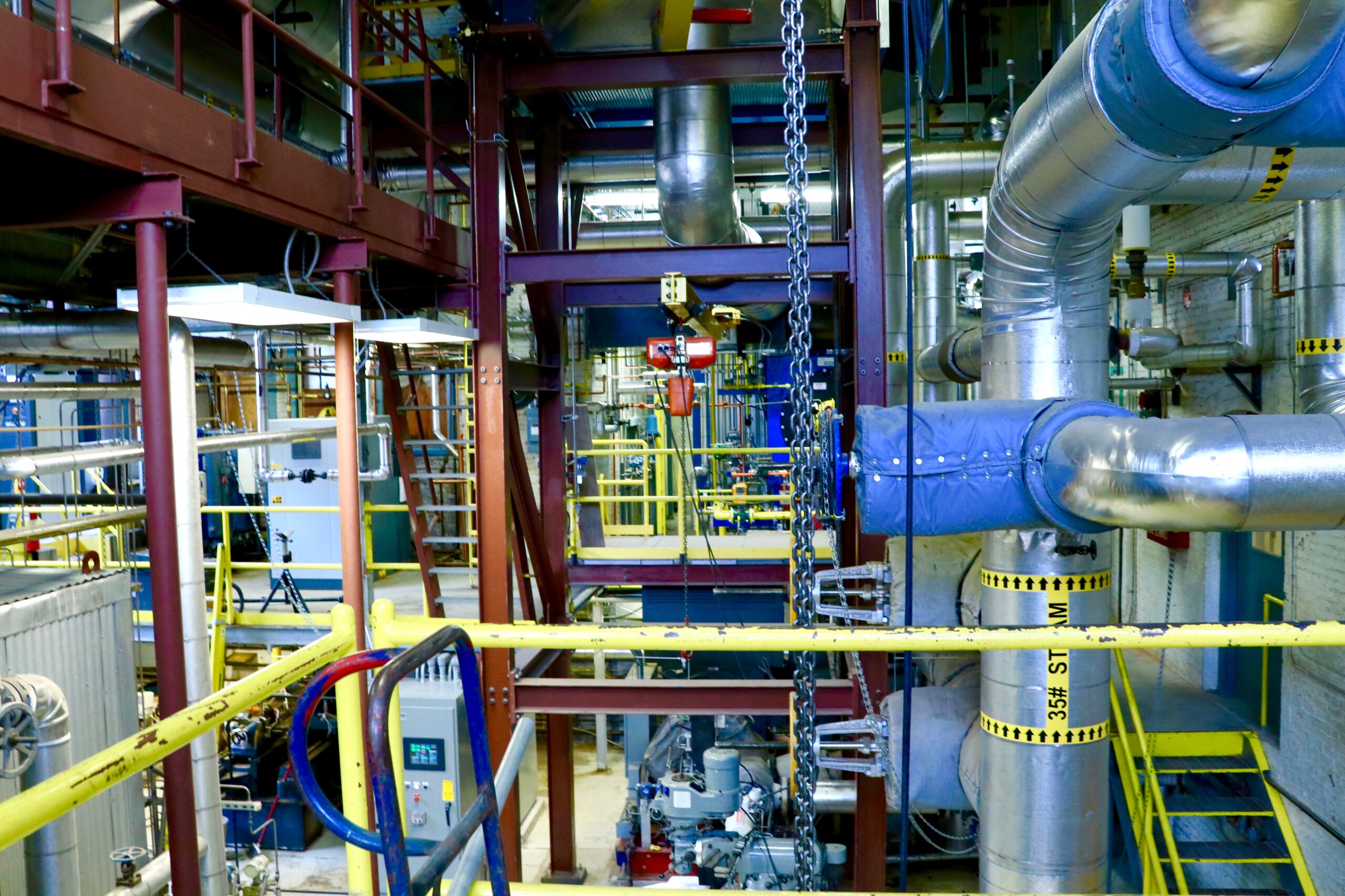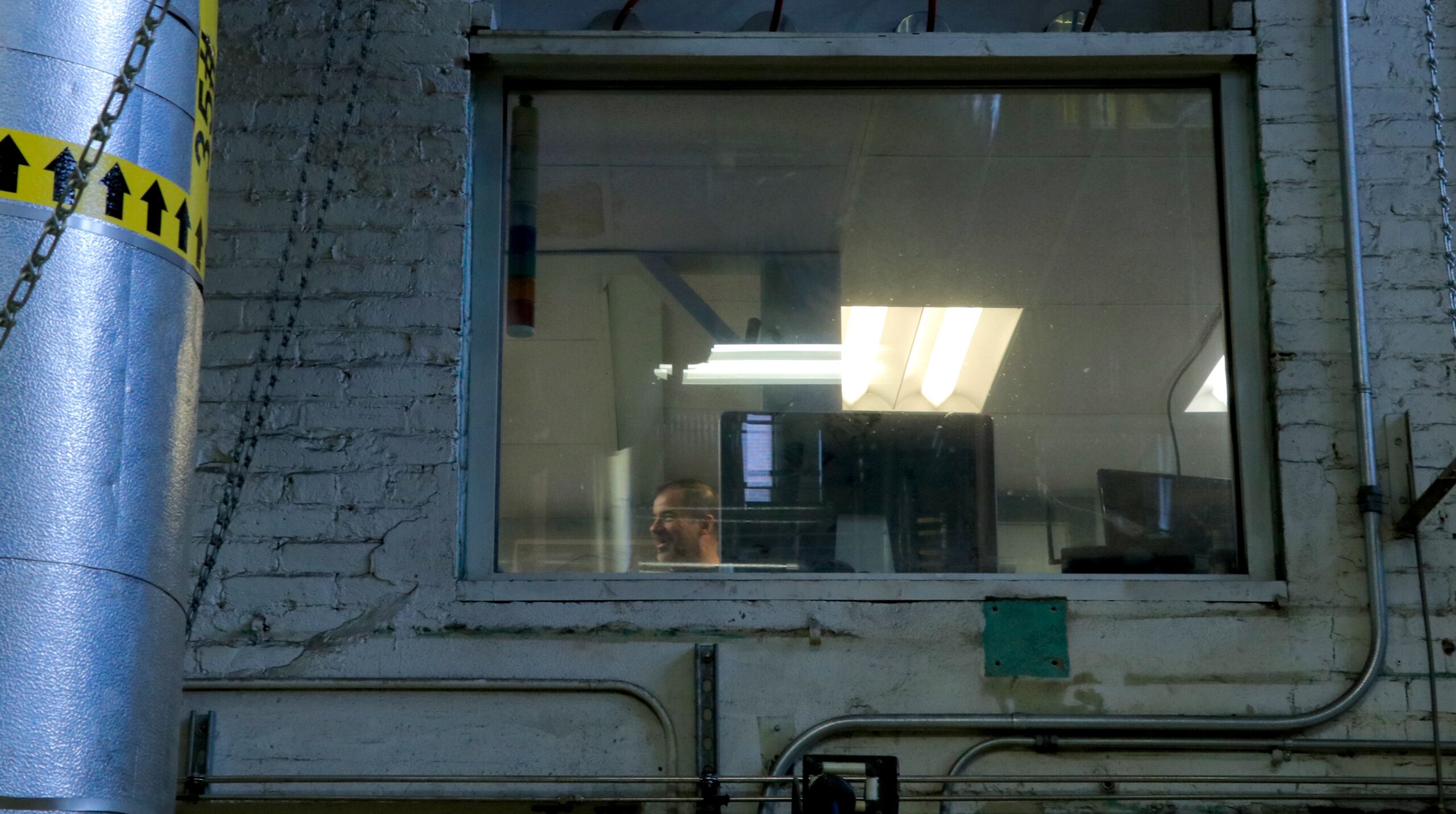Taking the heat
May 5, 2017
As students write papers in the wee hours of the morning, snooze their alarm for an 8 a.m. class, labor over crossword puzzles at lunch, go for an afternoon run, or dance the night away in a dimly lit basement, the Bowdoin Heating Plant’s six engineers work tirelessly to keep the College running.
 Hannah Rafkin
Hannah Rafkin“We’re here on Christmas. We’re here on Thanksgiving,” said Charles Blier, Engineer in Charge. The plant is staffed 24 hours a day, 365 days a year. The engineers work one of two 12 hour shifts, starting or ending at 7 a.m. The night shift is done solo.
 Hannah Rafkin
Hannah RafkinCharles Blier has been working at Bowdoin’s heating plant for 22 years. “Just about everything has changed here since I started,” he recalled. “In the old days, everything was run by a switch and button. Now, we use all these digital screens.”
 Hannah Rafkin
Hannah RafkinMany of the changes in the plant have stemmed from the College’s sustainability efforts. In the past decade, the plant has decreased its fossil fuel usage by 19 percent. Thanks to upgrades to the campus steam system, the condensate distribution system, the steam metering systems, improved campus insulation, and conversation of steam heating to hot water in campus buildings, Bowdoin is making strides in energy efficiency.
 Hannah Rafkin
Hannah RafkinThough the engineers do rounds throughout the facility every hour, they spend most of their time looking out into the plant from the control room window, where they monitor the goings-on of the interior on four flatscreens.
 Hannah Rafkin
Hannah RafkinStepping out of the control room and into the plant is an intense sensory experience – a buzzing amalgamation of heat, noise, and color. Though the plant is sprawling and maze-like, the engineers are familiar with every nook and cranny, every pipe and knob, every tank and tool.
 Hannah Rafkin
Hannah RafkinAfter 22 years on the job, Blier is a master of this maze. “It’s just a standard color scheme.” He pointed at various knobs and tanks as he gave a quick rundown: “Railings are always painted yellow, so the staff knows when they’re approaching the edge. Orange for oil, yellow for gas, that’s always blue, that’s always green.”
 Hannah Rafkin
Hannah Rafkin“Everything’s hot, everything’s high up. You have to go by the manual, even if it’s a little slower,” explained Blier, describing the plant’s approach to safety. “The day you think you know everything is the day you’re gonna get yourself killed.”
 Hannah Rafkin
Hannah RafkinThe engineers stay on the premises of the plant for the entirety of their 12 hour shifts. They eat their meals inside the control room, making use of a staff refrigerator and a soda machine. “Domino’s is your friend,” Morton said, inciting nods and grins of agreement from his coworkers.
 Hannah Rafkin
Hannah RafkinMorton often uses the plant’s welding shop to do repairs and manufacturing for various campus departments – most often for dining and athletics. “We fix a lot of goalposts. We make a lot of brackets for the high jump posts, so they can adjust the height.” Manufacturing is Morton’s favorite part of the job – besides getting paid every two weeks, of course. “It’s cool to build stuff, to start with nothing and end up with something useful.”
 Hannah Rafkin
Hannah RafkinMorton and Blier both appreciate the variety of tasks the job involves. “If all you did was just the rounds, just adding oil to the turbine and checking the bearings, you would be pretty bored pretty quick,” Blier said.
 Hannah Rafkin
Hannah RafkinGenerally, the engineers have minimal interaction with staff and students. “Nobody really knows we exist. Until something’s shutting down – then everybody is talking to us,” said Morton.
 Hannah Rafkin
Hannah RafkinComments
Before submitting a comment, please review our comment policy. Some key points from the policy:
- No hate speech, profanity, disrespectful or threatening comments.
- No personal attacks on reporters.
- Comments must be under 200 words.
- You are strongly encouraged to use a real name or identifier ("Class of '92").
- Any comments made with an email address that does not belong to you will get removed.

Great Feature.. I walked by that plant daily for four years and always wondered what it looked like and who was inside making it go! Thank you all for keeping the winters warm, you are appreciated.